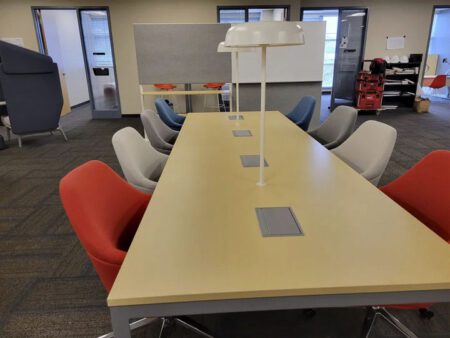 Introduction: When it comes to installing office furniture, preparation is key to avoid potential issues. Coordinating with all parties involved, conducting thorough research, and being aware of potential roadblocks can significantly contribute to a successful installation. In this guide, we will explore common problems that can arise during office furniture installations and provide insights on how to mitigate them, ensuring a smooth and problem-free installation day.
Introduction: When it comes to installing office furniture, preparation is key to avoid potential issues. Coordinating with all parties involved, conducting thorough research, and being aware of potential roadblocks can significantly contribute to a successful installation. In this guide, we will explore common problems that can arise during office furniture installations and provide insights on how to mitigate them, ensuring a smooth and problem-free installation day.
Things to Keep in Mind Before Installation: To increase the chances of a successful installation, consider the following factors before and on the day of installation:
Verify all details: Double-check all relevant details before the installation day and keep a confirmation email as a reference in case any issues arise.
Remove existing furniture: Ensure that the space is cleared of old furniture and appliances before the installation team arrives to avoid delays and obstacles.
Reserve the elevator: If your office is located in a building with elevators, make sure to reserve them in advance to prevent frustrating delays during the move.
Survey the workspace: Conduct a thorough assessment of the workspace before installation day to identify any unexpected obstacles such as stairs or layout discrepancies.
Inform the staff: If the installation takes place in a workspace with existing employees, communicate the installation plans in advance to ensure their readiness and cooperation.
Coordinate with other trades: If there are other trades workers present on-site simultaneously, coordinate with them to prevent any conflicts or overlapping activities.
Problems With DIY Furniture Installation: While it may seem tempting to handle the furniture installation yourself, several problems can arise from this approach, including:
Employee injuries: Lack of experience in furniture assembly can lead to employee injuries, impacting their well-being and potentially causing legal liabilities for your business.
Damage to technology and equipment: Inexperienced installation attempts can result in damage to expensive technology and equipment, leading to costly repairs or replacements.
Additional costs: Poorly executed installations can result in extra costs for your business, such as repairing damaged furniture or paying for additional repairs caused by installation errors.
Workers’ compensation claims: Injuries sustained during the installation process may require workers’ compensation claims, adding further financial burden to your business.
Voided warranties: Non-certified installations can void manufacturer warranties, leaving your furniture unprotected in case of defects or damage.
Benefits of Hiring a Professional: Considering the size, weight, and complexity of office furniture, it is advisable to hire professional office furniture installers. Here are the benefits they provide:
Expert handling: Professional installers have the experience and expertise to handle office furniture with care, reducing the risk of scratches, surface damage, and improper assembly.
Correct assembly: Professional installers are trained in the proper techniques and use the necessary tools to assemble furniture accurately, ensuring functionality and longevity.
Warranty preservation: Utilizing certified installers ensures that your furniture remains under the manufacturer’s warranty, providing protection in case of defects or damage.
Conclusion: By following the recommendations provided in this guide, you can approach your next office furniture installation project with confidence and preparedness. Avoiding potential problems and entrusting the installation to professionals will not only save time and money but also ensure a smooth and successful installation experience.



